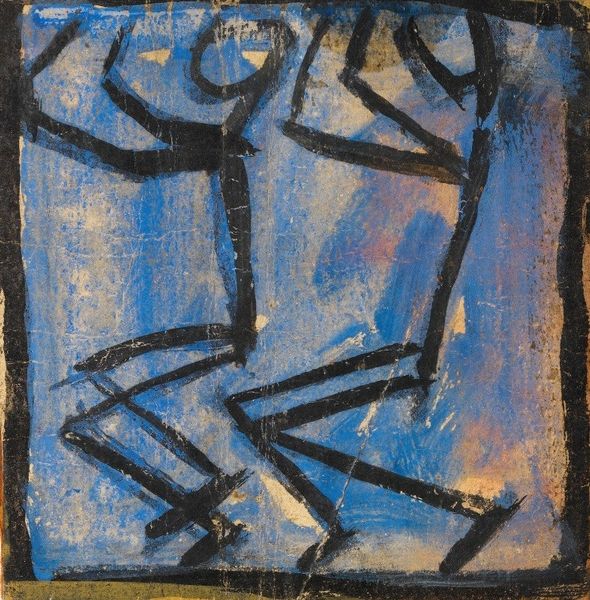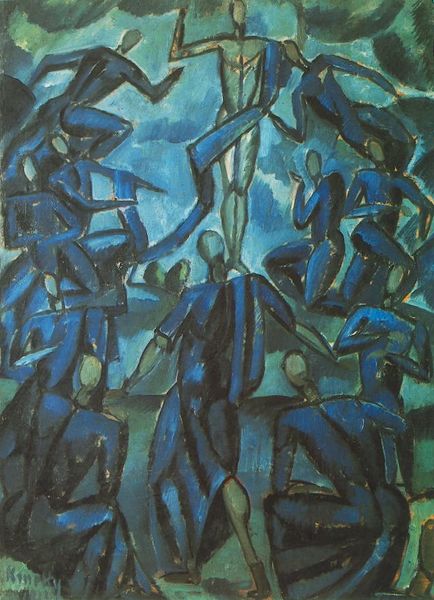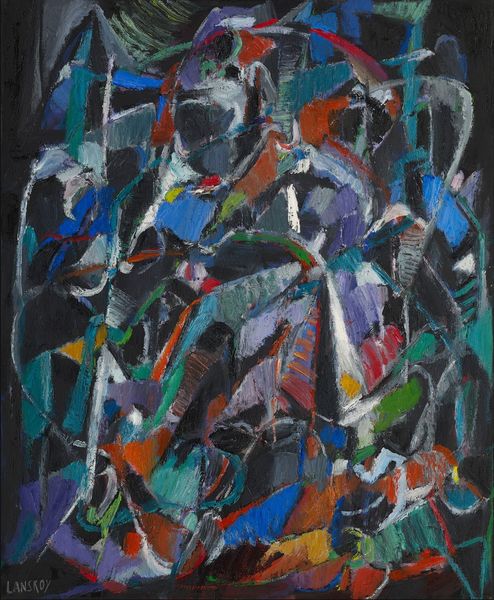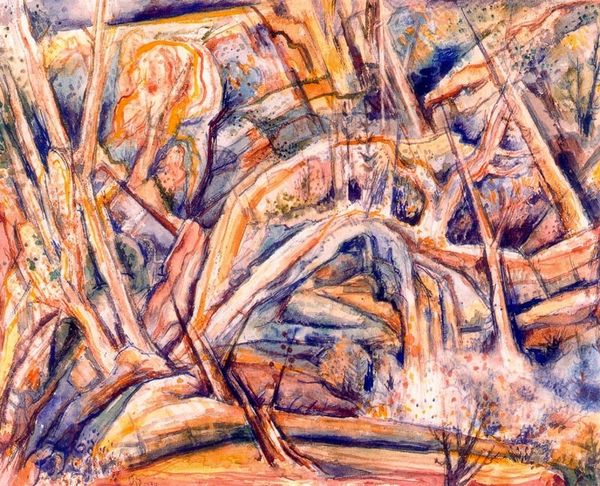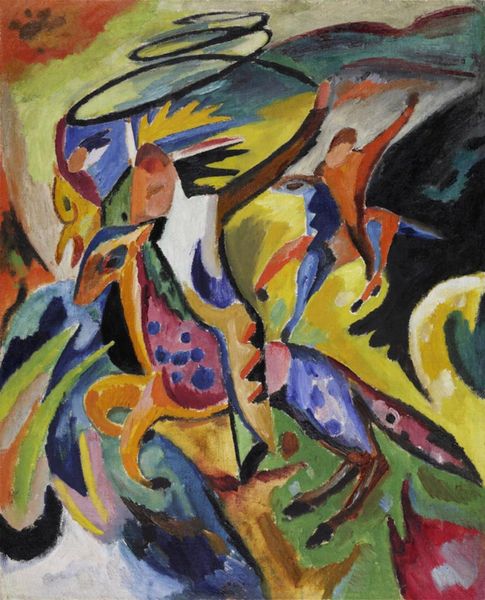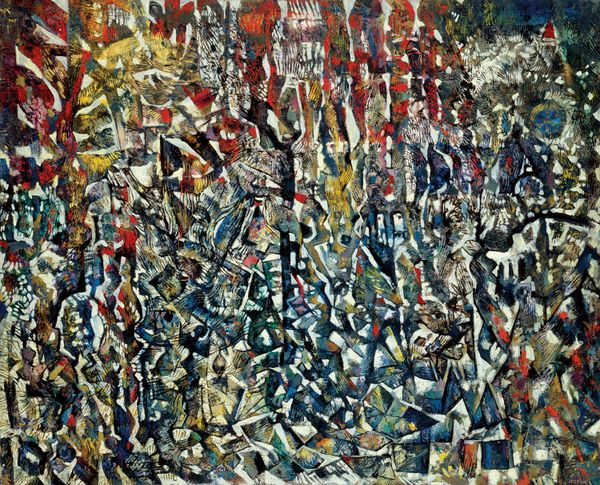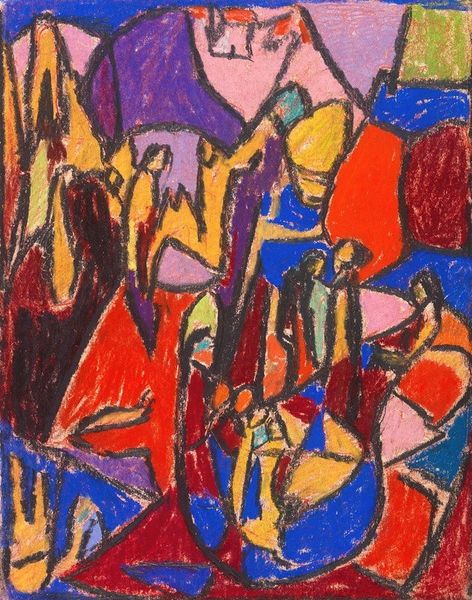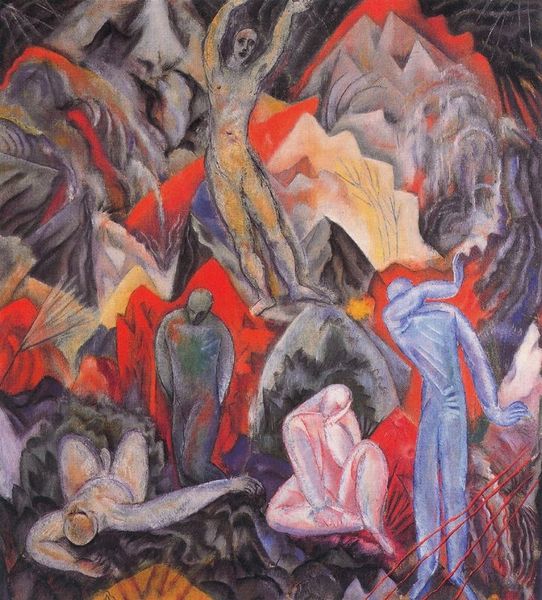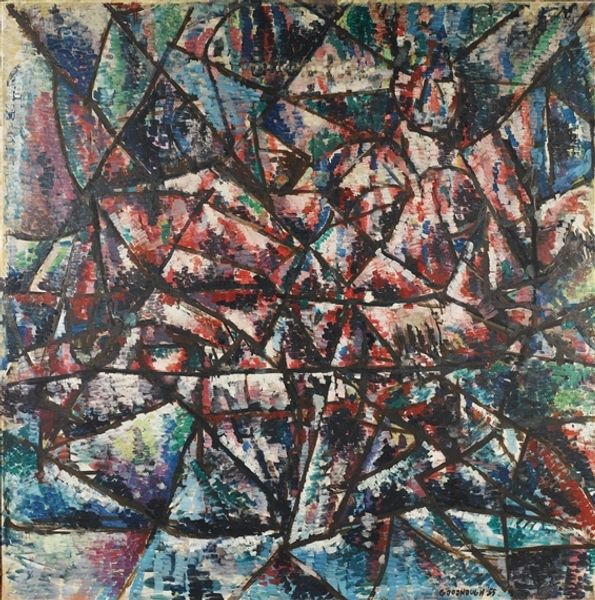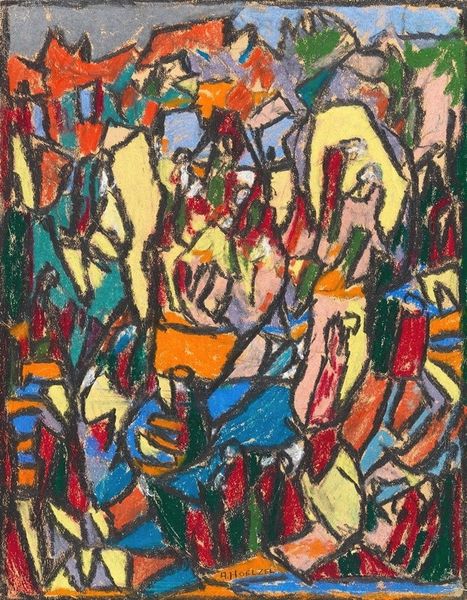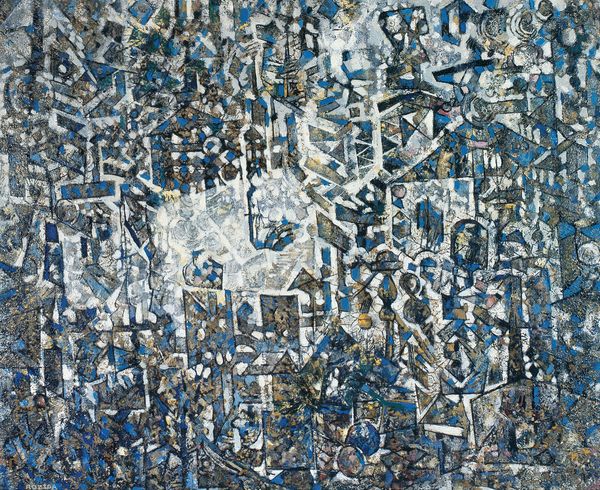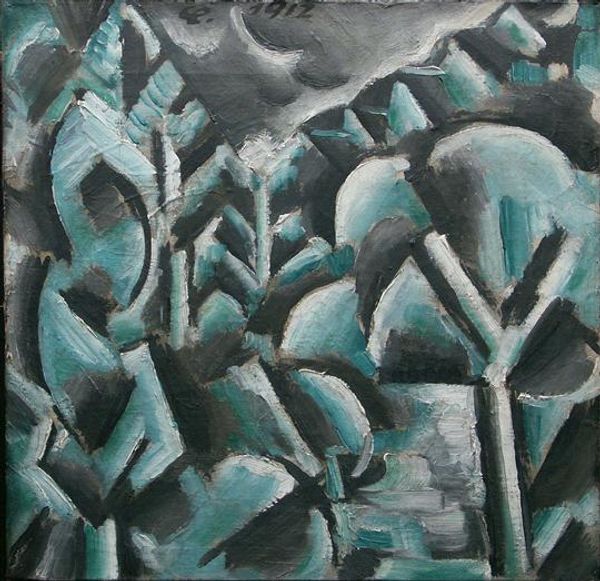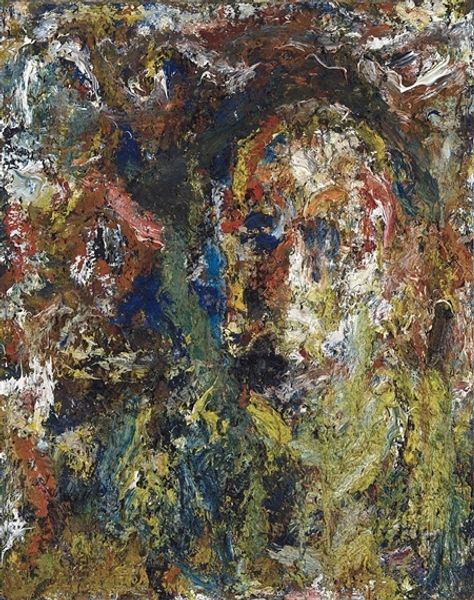
tempera, painting
#
abstract expressionism
#
narrative-art
#
tempera
#
painting
#
figuration
#
expressionism
Copyright: Kmetty János,Fair Use
Curator: Let's consider "Ascension," a tempera painting completed in 1913 by the Hungarian artist Kmetty János. What are your first thoughts on encountering this work? Editor: A feeling of profound unease. The cool blues create a chilling atmosphere, despite the ostensibly upward motion. There's a tension between aspiration and anguish in the figures. Curator: That’s a keen observation. From a formal perspective, note how Kmetty orchestrates a dynamic composition. The figures, rendered in a kind of fractured, cubist style, are arranged in layers, creating a sense of depth and implied movement toward a central, elevated figure. Editor: That central figure dominates, almost oppressively so. He’s bathed in a ghostly light, with arms raised, reminiscent of classical depictions of ascent. Given the title "Ascension," one can't help but wonder: what is he ascending from, or to? The figures below seem trapped, weighed down, not necessarily sharing in his elevation. Curator: The color palette contributes significantly to the mood, doesn't it? The monochromatic blues are punctuated by subtle variations, creating texture and suggesting depth. Kmetty's use of tempera also lends a distinct, almost matte quality to the surface. It doesn’t have the sheen or luminosity of oil. Editor: It feels very deliberate, that muted tone. Blues are often associated with sorrow or mourning. Are we witnessing a spiritual ascension or an escape? The symbols are ambivalent; is it triumph or a sacrifice? The almost brutal rendering of the figures suggests the cost may be very high. The repeated forms may also evoke an ancient chorus from mythology. Curator: I think you are on to something there. It’s precisely this ambiguity that gives the painting its power, isn’t it? The fracturing of form and monochromatic scheme serve to emphasize emotional content, hinting at a narrative rather than presenting a straightforward visual story. Editor: Absolutely. Considering the era—just before the outbreak of the First World War— it could be seen as foreshadowing cataclysmic events to come, using ascension as metaphor. Curator: Yes, reflecting on its formal qualities and the heavy symbolism, "Ascension" transcends a simple depiction, serving as a potent meditation on the complexities of the human condition. Editor: A chilling yet unforgettable piece. It's an image that haunts, and makes you ponder our potential fate.
Comments
No comments
Be the first to comment and join the conversation on the ultimate creative platform.
